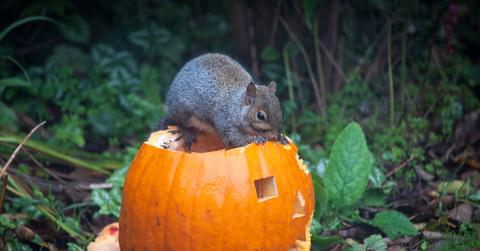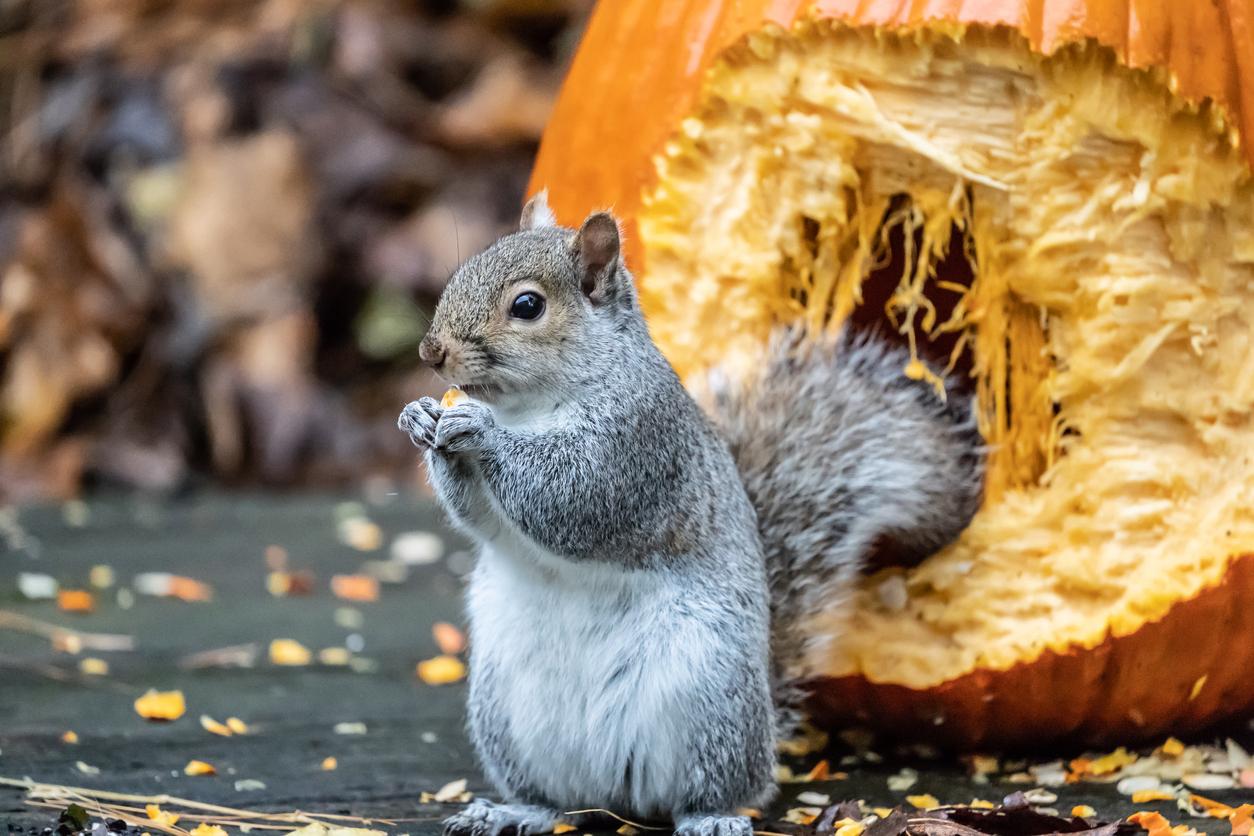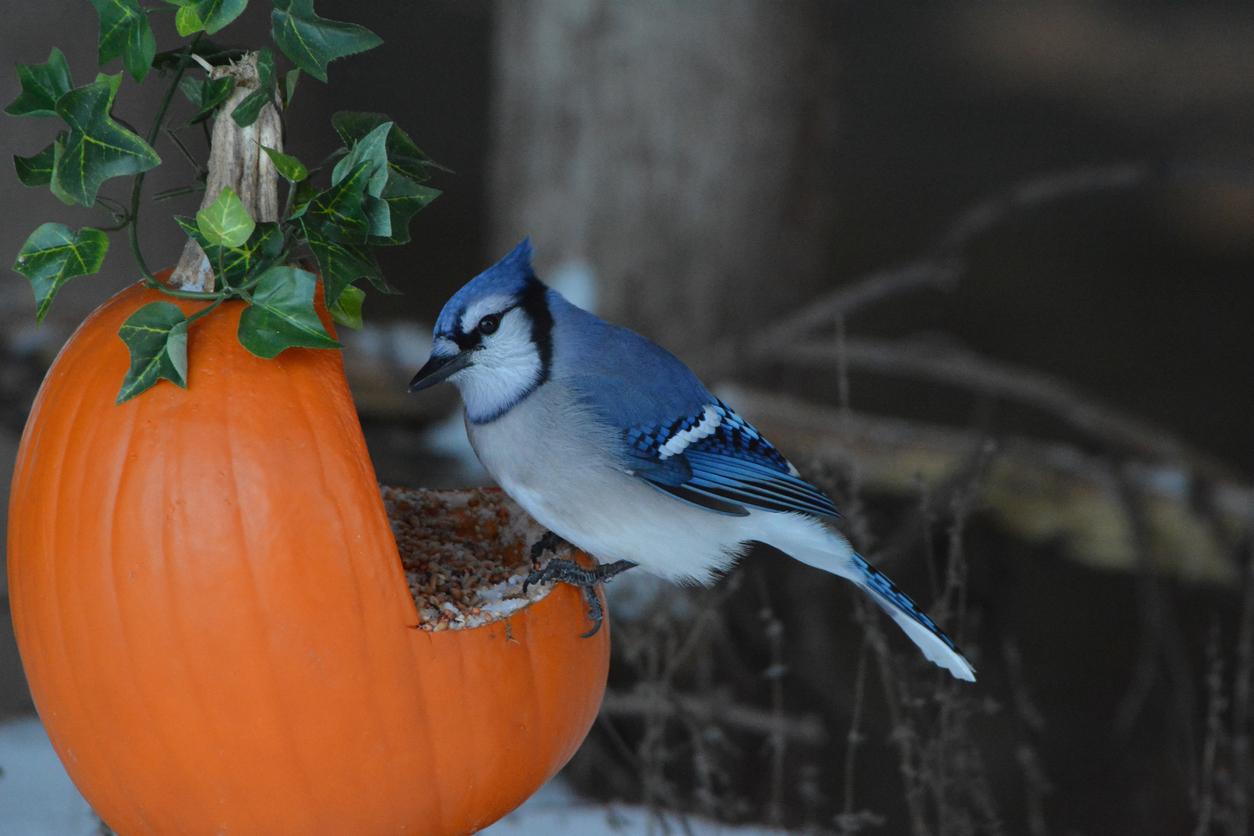How to Humanely Keep Squirrels From Eating Your Pumpkins
Things like petroleum jelly and vinegar can help deter squirrels from your Halloween pumpkins.
Published Oct. 10 2024, 2:49 p.m. ET

Squirrels may be adorable visitors to your home garden, but having unintended sources of food around your house may damage your belongings and potentially pose a health risk to the squirrel. During the fall season, it's common to leave pumpkins around the exterior of homes, which can attract squirrels and other animals.
If you're planning to decorate your home with pumpkins to celebrate autumn, it's important to know how to keep squirrels from eating them.
With squirrel well-being and wildlife safety in mind, we collected tips to keep your pumpkins intact and the animals around you at bay. Read on for how to keep your pumpkins and jack-o'-lanterns safe and away from the mouths of squirrels.

Try these effective and humane methods to keep squirrels safely away from your fall pumpkins.
White vinegar: According to Real Homes, vinegar is an effective deterrent due to its pungent odor, which may be sufficient enough to trigger a squirrel's sensitive sense of smell.
Rather than applying vinegar directly to the pumpkin, which might cause damage, Real Homes recommends spraying vinegar around the area of the pumpkin — before the squirrel even has a chance to approach it.
Chili pepper spray: Capsaicin — the compound within spicy peppers that gives them their spicy taste — is also a deterrent for pests in the garden. To make this spray, Taste of Home says all you'll need is water, dish soap, garlic, and hot peppers, hot pepper flakes, or hot pepper powder. You can then spray it in your garden, and it will keep squirrels and other animals away, without harming any animals or pollinators.
Petroleum jelly: Real Homes also suggests coating your pumpkin in petroleum jelly, which serves the dual purpose of offering an unappealing texture to the squirrel and offering the pumpkin protection against the elements. Similarly, you can coat the pumpkin in hairspray.
Animal hair: If you're less interested in coating your pumpkin in substances and instead would like to try out physical barriers to the pumpkin, Martha Stewart recommends placing the fur or hair from your companion animals around the pumpkin, which in theory could trick the squirrel into believing a predator, such as a dog, is protecting the area.
Decoys: Statues of a squirrel's other predators, such as owls, may also prove to be effective.
Squirrel feeders: Otherwise, you can also try Martha Stewart's suggestion of hanging a squirrel feeder elsewhere around the home, so that squirrels fill up on nuts and seeds and are too full to snack on your pumpkin. Just be cautious of not overfeeding wildlife, which comes with its own consequences.

What animals eat pumpkins?
With these tips in mind, be aware that a pumpkin on your porch may attract other animals looking for a tasty treat. According to The Nature Conservancy's conservation science blog Cool Green Science, the following animals are known to enjoy eating pumpkins:
- Birds
- Butterflies
- California kingsnake
- Goat
- Ground Hornbill
- North American porcupine
- Sand cat
- Sheep.
Additional wildlife that may find pumpkins appealing include deer, mice, rabbits, foxes, raccoons, and chickens, according to A-Z Animals.